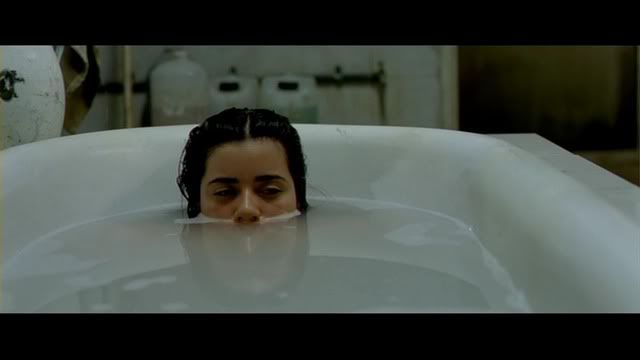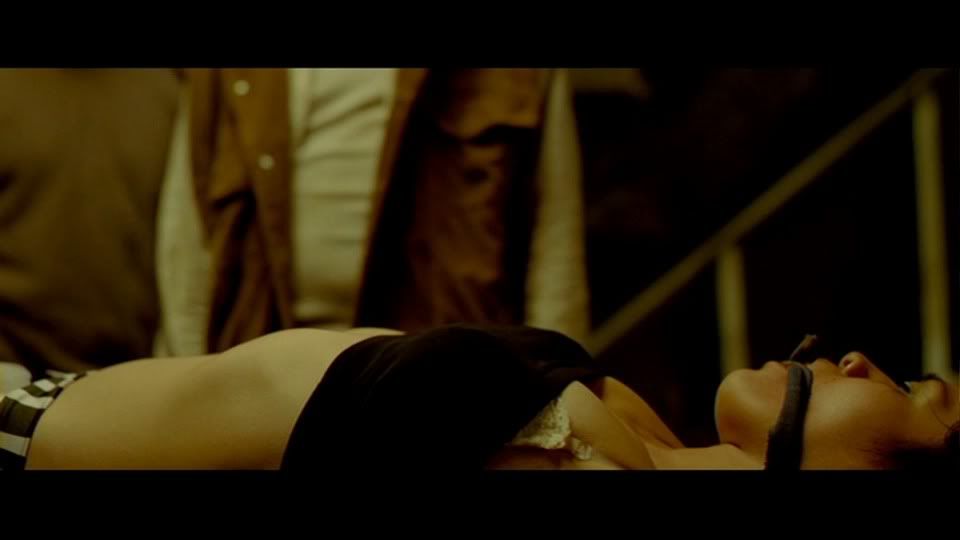

|
 |
We Are What We Are AKA Somos lo que hay
R2 - United Kingdom - Chelsea Films Review written by and copyright: Samuel Scott (3rd March 2011). |
|
The Film
 Late on in 2010, I heard a reasonable amount of buzz about a small Mexican cannibal film called "We Are What We Are" (or "Somos lo que hay" to give it it's native name), the debut feature length film from Jorge Michel Grau. The opinions I heard ranged massively with some of my favourite sites claiming the film to be the worst that aired at Fantasia International Film Festival, Berlin Fantasy Filmfest, New York Film Festival and Cannes whilst some of my favourite sites claimed it was an original entry into the cannibal sub-genre. Some even went as far as to say that Jorge Michel Grau is a front runner of Mexican cinema, leading the South American New Wave. A bold statement, especially considering the genre, if ever there was one. Cannibal films have had a very chequered past. When the genre hit its stride in the seventies and eighties, mainly thanks to Italian filmmakers such as Umberto Lenzi ("The Man from Deep River"), Ruggero Deodato ("Cannibal Holocaust") and Sergio Martino ("Mountain of the Cannibal Gods"), the films were hit heavily with criticism due to their sexual violence, graphic gore and genuine slayings of animals leading to difficulty with censors,. Many films at the time became banned in many countries or heavily cut. In the nineties and the turn of the century, the cannibal genre changed direction from "jungle tribes" to people who live in towns/cities and what goes on in a cannibals mind. Most notably, the Hannibal Lector films including "Silence of the Lambs" and "Hannibal" became box office hits and the cannibal genre had changed in a way that was more accessible to the general movie-goer. Because of the success of the Lector films, the cannibal genre has long needed something new in order to rise above the sea of cheap cash-ins/knock-offs and low budget, no-frills movies. Perhaps, after what I had read about "We Are What We Are", we have finally got that new thing needed. The synopsis from Chelseas Films reads: "A middle-aged man dies in the street, leaving his widow and three children destitute. The devasted family is confronted not only by his loss but with a terrible challenge - how to survive. For they are cannibals. They have always existed on a diet of human flesh consumed in bloody ritual ceremonies... and the victims have always been provided by the father. Now that he is gone, who will hunt? Who will lead them? How will they sate their terrific hunger? The task falls to the eldest son, Alfredo, a teenage misfit who seems far from ready to accept the challenge... but without human meat the family will die." Simple enough? Has it done for cannibal films what (the phenomenal) "Let the Right One In" has done for vampire films? Has director Jorge Michel Grau provided us with anything new? Read on after the screencaps for my opinion. 

Cannibals "Let the Right One In"? Absolutely not. Something new? To a point, yes. For me, it was a film of two halves with the first half working better, not as a cannibal film, but as a film about a family struggling to cope after the death of the head of the family. The fact that they eat human flesh to live didn't feel like the main part of the story at this point, despite the film largely focusing on the brothers struggle to get along and to find a victim. The second half of the film felt like a cannibal film, victim finally bound and gagged, violence exploding but shot in a way in which, for the most part, we don't see the maliciousness of the attacks, but the way it is shot still gives you a rather vivid idea of what has happened. A good example of this was when the mother, Patricia, hits a victim repeatedly with a golf club. We see the hatred in her actions and her eyes, and we see the club get viciously swung towards the victim, but we don't see the actual contact, or the victim at all during the attack. The acting ranges from mediocre for the brothers, to above average for the mother, to excellent for Sheila, the sister, who unfortunately does not get the amount of screentime her character deserves. Script wise the story could've flowed a little better at times but as a whole it is better than most films of the genre. The soundtrack was suitable but didn't really add to the atmosphere or build tension as much as it should've, which was a shame. As a whole I would say don't believe the hate, or the love this has received. I didn't find it to be anything new apart from the way the first half of the film develops and the fact it is set in a city rather than the middle of nowhere (and the city setting could've been utilised to a greater extent) yet I do feel that as a debut, Grau hasn't done bad and is a name to look out for in the future.
Video
Chelsea Films present "We Are What We Are" with an anamorphic transfer in the original aspect ratio of 2.35:1. As to be expected for a new film, the transfer is fine with no real problems to worry about. The colours are presented with good clarity, especially during many of the dark scenes. Subtitles are included in English and are unfortunately forced. Despite this, the subtitles are clear throughout, never move to fast and are free from mistakes.
Audio
There are two options included on the disc, both in the original Spanish language. The track I watched the movie with was the Dolby Digital 5.1 track which was OK. There wasn't as much use of the surrounds or LFE as I would've liked which is a shame as the ambience could've helped the (not up to standard) score build the tension that is sometimes lacking. The other track is a 2.0 stereo track, again Dolby Digital.
Extras
Just a trailer which runs 1 minute, 32 seconds. A commentary would've been nice or maybe a couple of interviews.
Packaging
Packaged in a keep case.
Overall
Worth a watch. Many will love the focus on the family struggling to remain a unit, many will hate it. Some, like me, will find it a bit understated.
|
|||||

|